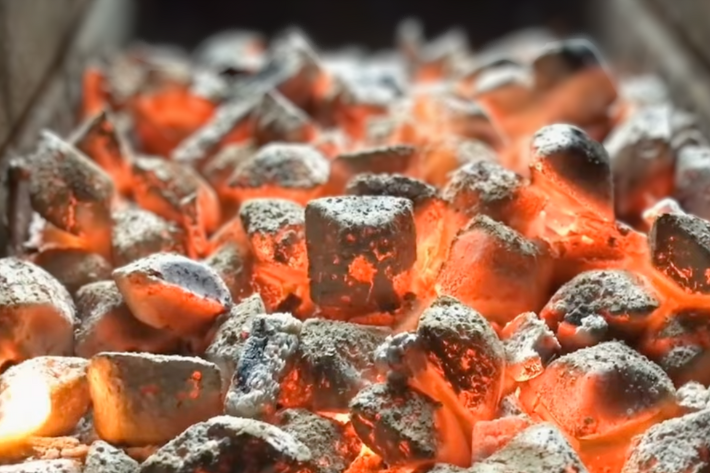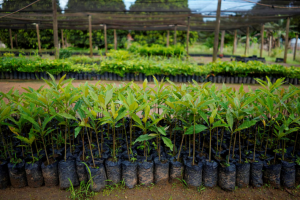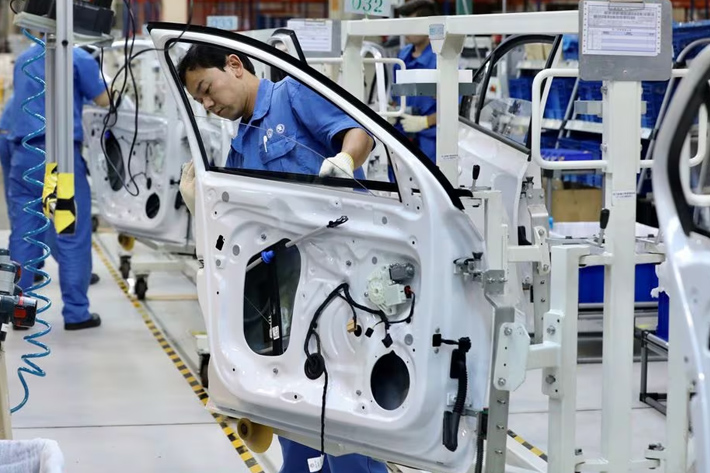Researchers in a new study have found that biochar can act as a more durable and environmentally friendly substitute for some of the cement used in the production of concrete.
Biochar is a charcoal-like substance made from burning organic matter like deadwood, plant residue, human waste and agricultural waste in a low oxygen environment by a method called pyrolysis. The material is slowly gaining use as a method of carbon removal, as pyrolysis can lock carbon from organic matter into biochar for thousands for years instead of it being released into the atmosphere via decomposition or open burning.
A new study by Canada’s University of Saskatchewan has found, meanwhile, that the addition of biochar can also make concrete stronger.
Also on AF: China Emissions Fall In First Half But Global Climate Alarm Persists
“We’re using the non-edible component, like flax or wheat straw,” the study’s lead researcher Ravi Patel told Tech Explore. “Normally, this kind of plant waste is left on the field,” he added.
The researchers experimented with various amounts of biochar to determine how much of the charcoal-like substance should be added to a cement mix to create ideal results. They found that a 2 weight percentage addition of biochar was the optimum level that could increase concrete strength and reduce its water absorption. But a higher concentration of biochar had a negative impact on concrete strength, they found.
Despite the low amount of biochar substitutability, the study holds promise for tackling emissions in construction, which is heavily reliant on cement.
Between 8% to 10% of the world’s total global greenhouse gas emissions are attributable to cement production. And these emissions are among the hardest to reduce as producing cement requires huge amounts of energy, which largely comes from fossil fuels like coal.
Furthermore, chemical processes involved in cement production, specifically, the breakdown of limestone, create unavoidable emissions.
That would mean that even the smallest substitution of cement could deliver an impactful reduction in emissions.
“The cement contributes only 20% of the total volume of the concrete but accounts 90% for the total CO2 emission [in construction],” scientists on the study said.
Biochar can reduce “the total cement quantity used” while also lowering the construction industry’s carbon footprint, it said. The use of biochar can also help to reduce the rising costs of concrete production, it added.
“Biochar can play a crucial role in the sustainability of the construction industry,” researchers on the study noted. They are now set to assess how well the biochar-enhanced concrete can perform over the longer term, Tech Explore noted.
- Vishakha Saxena
Also on AF:
Study Says Biochar Can Solve Asia’s Fertiliser Shortages
Carbon Removals Not Growing Fast Enough For Climate Goals
Carbon Removal Could Rake in $100 Billion Annually From 2030
A European Push Could Help India Fill Carbon Removal Gaps
Microsoft, Google Announce Major Carbon Removal Deals
Fossil Fuels Set to Drive Global Emissions to a Record, Yet Again
Spending on Global Energy Transition Well Under What’s Needed
Climate Chaos ‘Could Disrupt Half of Global Chipmaking by 2050’
Firms Underestimating Risks From Carbon-Fuelled Climate Change
Will Extreme Weather Break Asia’s Supply Chains?






















